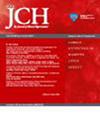Large Variation in Adherence to Diagnostic Guidelines in Hypertension Management in Swedish Primary Healthcare
Abstract
High blood pressure (BP) is a frequent cause for visits to primary healthcare centers (PHCCs) in Sweden. Guidelines on methods for BP measurements for diagnosis of hypertension have recently been updated. We aimed to study adherence to diagnostic guidelines in hypertension management and evaluate whether adherence to guidelines was related to organizational or sociodemographic characteristics. Interviews with representatives from 76 randomly selected PHCCs from eight regions in Sweden were conducted. PHCCs’ use of 24-h ambulatory BP monitoring (ABPM), home BP monitoring (HBPM) and BP measurements in both arms for the diagnosis of hypertension were chosen as proxy markers for adherence to diagnostic guidelines. An adherence index was created as a composite score of these diagnostic methods. The proportion of PHCCs stating they “often use” ABPM and HBPM were 13.7% and 16.0%, respectively, and 57.3% stated they performed BP measurements in both arms. Two PHCCs did not use ABPM, HBPM or BP measurements in both arms to diagnose hypertension. None of the organizational or sociodemographic characteristics (number of listed patients, Care Need Index (CNI), geographical location, ownership, investigation primarily led by doctor/nurse, dedicated team management, special training for hypertension and local routines) were associated with the adherence index. This study shows that adherence to diagnostic guidelines vary largely between PHCCs. No organizational characteristic, not even team-based management, was associated with adherence to diagnostic guidelines. The variation raises questions about inequity healthcare and novel strategies that may be needed to improve PHCCs’ adherence to diagnostic guidelines in hypertension management. Trial Registration: ClinicalTrials.gov identifier: 263351 [www.researchweb.org]


 求助内容:
求助内容: 应助结果提醒方式:
应助结果提醒方式:


